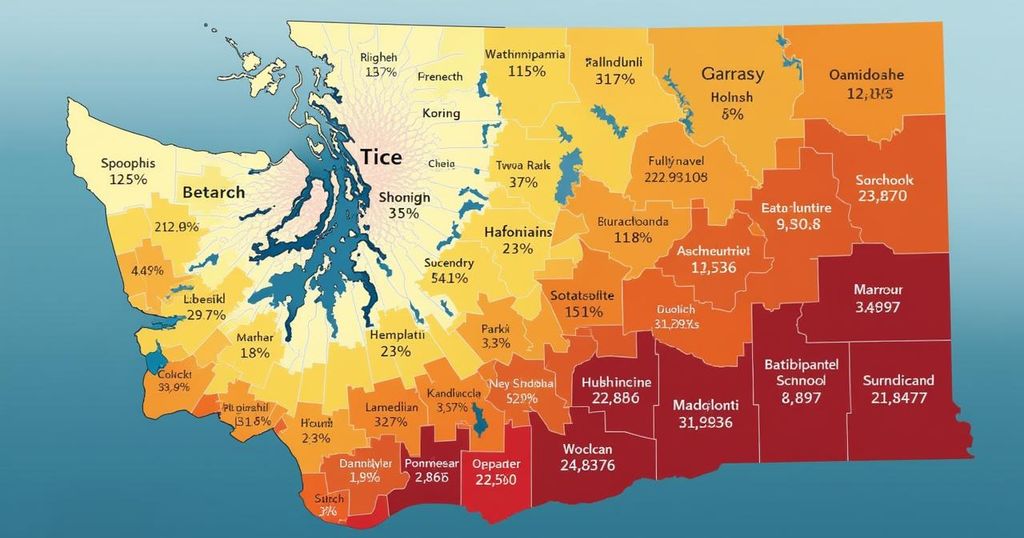Inadequate Earthquake Risk Data Leaves Washington Schools Vulnerable
The seismic risk data for public schools in Washington State is largely incomplete and difficult to access, affecting hundreds of schools located in high-risk areas. Despite efforts to evaluate school safety, many institutions have not documented seismic modifications or risk assessments. Experts highlight the need for improved transparency and mandatory evaluations to better protect students from potential earthquake hazards.
A significant concern has arisen regarding the seismic risk data associated with public schools in Washington State, highlighting its incompleteness and inaccessibility. Despite Stadium High School undergoing substantial seismic modifications in the mid-2000s as reported by Jeff Rogers, Director of Environmental Health and Safety for Tacoma Public Schools, the Washington Office of Superintendent of Public Instruction inaccurately lists the school as lacking any seismic retrofits. Currently, hundreds of public schools in Washington are situated in regions vulnerable to earthquake damage, yet information pertaining to their seismic assessments remains elusive. During the previous academic year, upwards of 378,000 students attended schools that were erected prior to the implementation of modern seismic codes, with no risk assessments or retrofits documented. Moreover, an additional 167,000 students were enrolled in institutions identified as having significant seismic risks based on their physical structures and geographic locations. The initiative to compile seismic data aims to gauge vulnerabilities statewide to prioritize enhancements and develop strategies for disaster preparedness. In contrast to Washington, states such as California, Oregon, and Utah have produced comprehensive inventories of school seismic risks in prior years, revealing a slower legislative approach in Washington as expressed by Governor Jay Inslee. Scott Black from the Office of Superintendent of Public Instruction disclosed that while funding and information are gradually being acquired, the inconsistency and lack of transparency in data collection hinder effective risk management. Schools have reported discrepancies where updates regarding seismic evaluations and upgrades made have not been reflected in the state data. Washington is home to numerous active fault lines, including the formidable Cascadia subduction zone. According to a 2022 report from the Federal Emergency Management Agency, the potential for a substantial earthquake could severely damage approximately 2,000 schools. However, divergent methods employed by various state agencies for assessing seismic risks have produced inconsistent data; while the Department of Natural Resources indicates that 70% of K-12 schools are in high seismic risk zones, the Office of Superintendent categorizes only 28% of schools as such. There exists no statutory requirement mandating school districts to conduct seismic evaluations, further complicating the process of gauging existing risks. The effort to evaluate school structures has historically been a state objective, yet progress has stalled, as evidenced by missed deadlines and incomplete evaluations for older schools. Experts advocate for greater transparency in seismic data, which could facilitate risk mitigation and encourage proactive measures among school communities and stakeholders. Future plans to integrate school seismic data into broader inventories of hazardous structures remain contingent upon resolving the current data gaps that obscure the true risk landscape of school buildings in Washington.
The seismic risk assessment and data collection processes for public schools in Washington State have faced significant challenges, culminating in incomplete information about many institutions. The absence of a legal requirement for seismic evaluations means that schools may remain unaware of their susceptibility to earthquake damage. Recent analysis reveals that a substantial portion of students attend schools constructed prior to the establishment of modern seismic standards, amounting to heightened vulnerability. Furthermore, discrepancies in data collection and reporting standards across various school districts further complicate the landscape of seismic safety in the education sector.
In conclusion, the incomplete and inconsistent seismic data associated with Washington’s public schools raises serious concerns for student safety in the event of an earthquake. The lack of transparency not only obscures the true state of risk but also hampers potential funding opportunities for necessary retrofits. There is an urgent need for cohesive statewide policies that mandate comprehensive seismic evaluations and promote public access to data, which will enable informed decision-making for families and educators alike. Improving the reliability of seismic risk data is essential for enhancing the safety of educational institutions across Washington.
Original Source: washingtonstatestandard.com




Post Comment